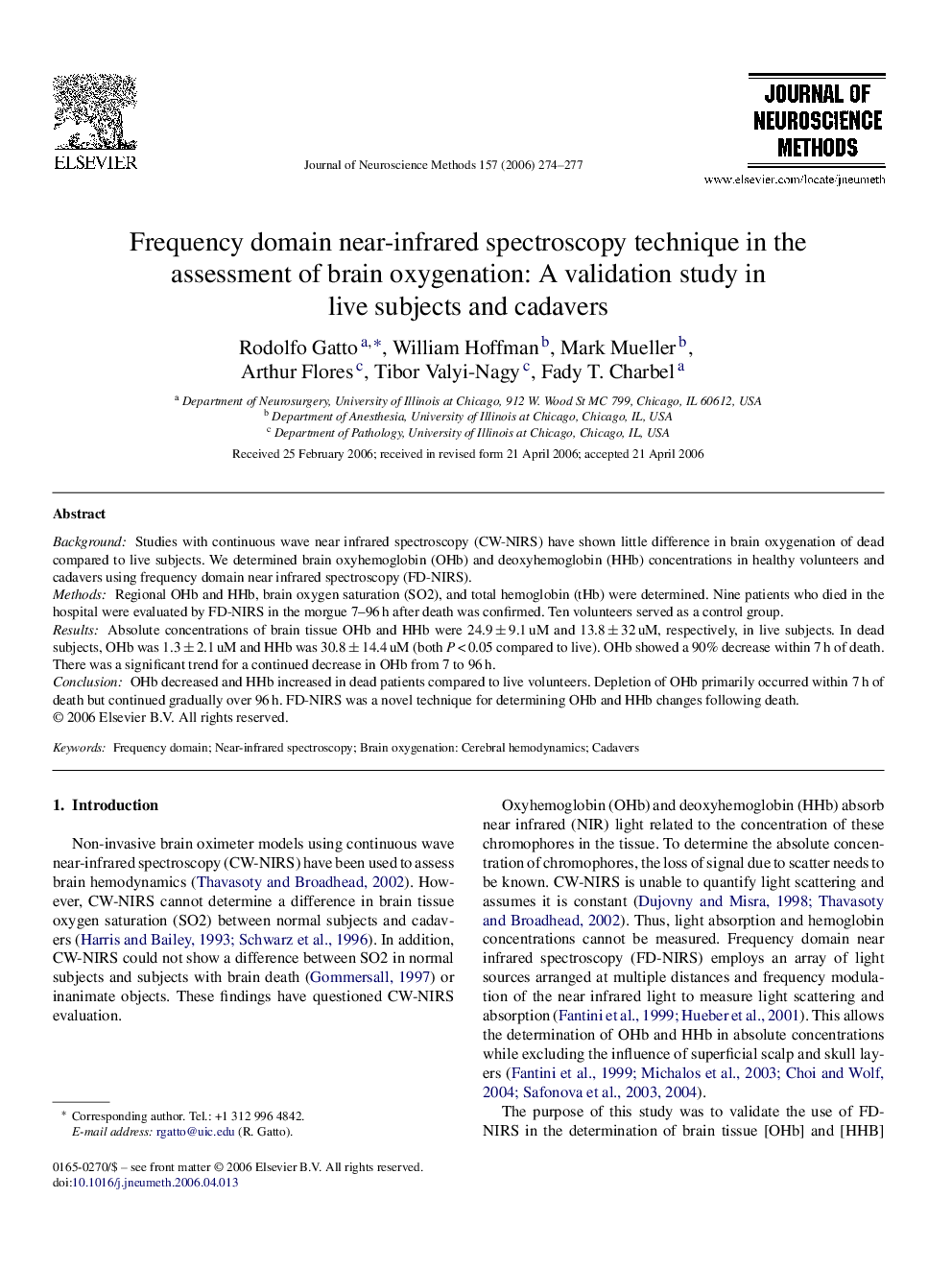| Article ID | Journal | Published Year | Pages | File Type |
|---|---|---|---|---|
| 4336996 | Journal of Neuroscience Methods | 2006 | 4 Pages |
BackgroundStudies with continuous wave near infrared spectroscopy (CW-NIRS) have shown little difference in brain oxygenation of dead compared to live subjects. We determined brain oxyhemoglobin (OHb) and deoxyhemoglobin (HHb) concentrations in healthy volunteers and cadavers using frequency domain near infrared spectroscopy (FD-NIRS).MethodsRegional OHb and HHb, brain oxygen saturation (SO2), and total hemoglobin (tHb) were determined. Nine patients who died in the hospital were evaluated by FD-NIRS in the morgue 7–96 h after death was confirmed. Ten volunteers served as a control group.ResultsAbsolute concentrations of brain tissue OHb and HHb were 24.9 ± 9.1 uM and 13.8 ± 32 uM, respectively, in live subjects. In dead subjects, OHb was 1.3 ± 2.1 uM and HHb was 30.8 ± 14.4 uM (both P < 0.05 compared to live). OHb showed a 90% decrease within 7 h of death. There was a significant trend for a continued decrease in OHb from 7 to 96 h.ConclusionOHb decreased and HHb increased in dead patients compared to live volunteers. Depletion of OHb primarily occurred within 7 h of death but continued gradually over 96 h. FD-NIRS was a novel technique for determining OHb and HHb changes following death.
